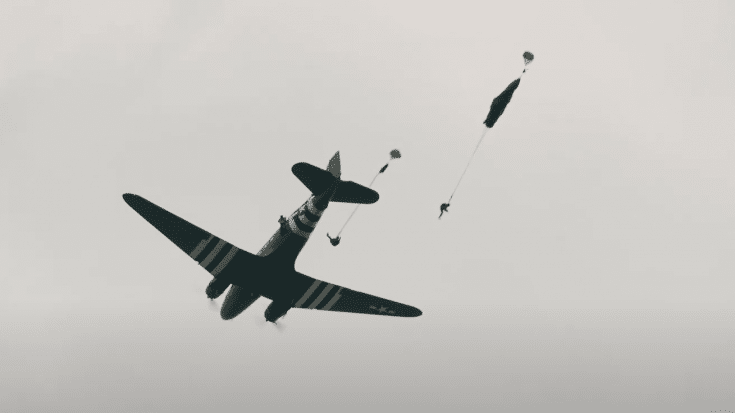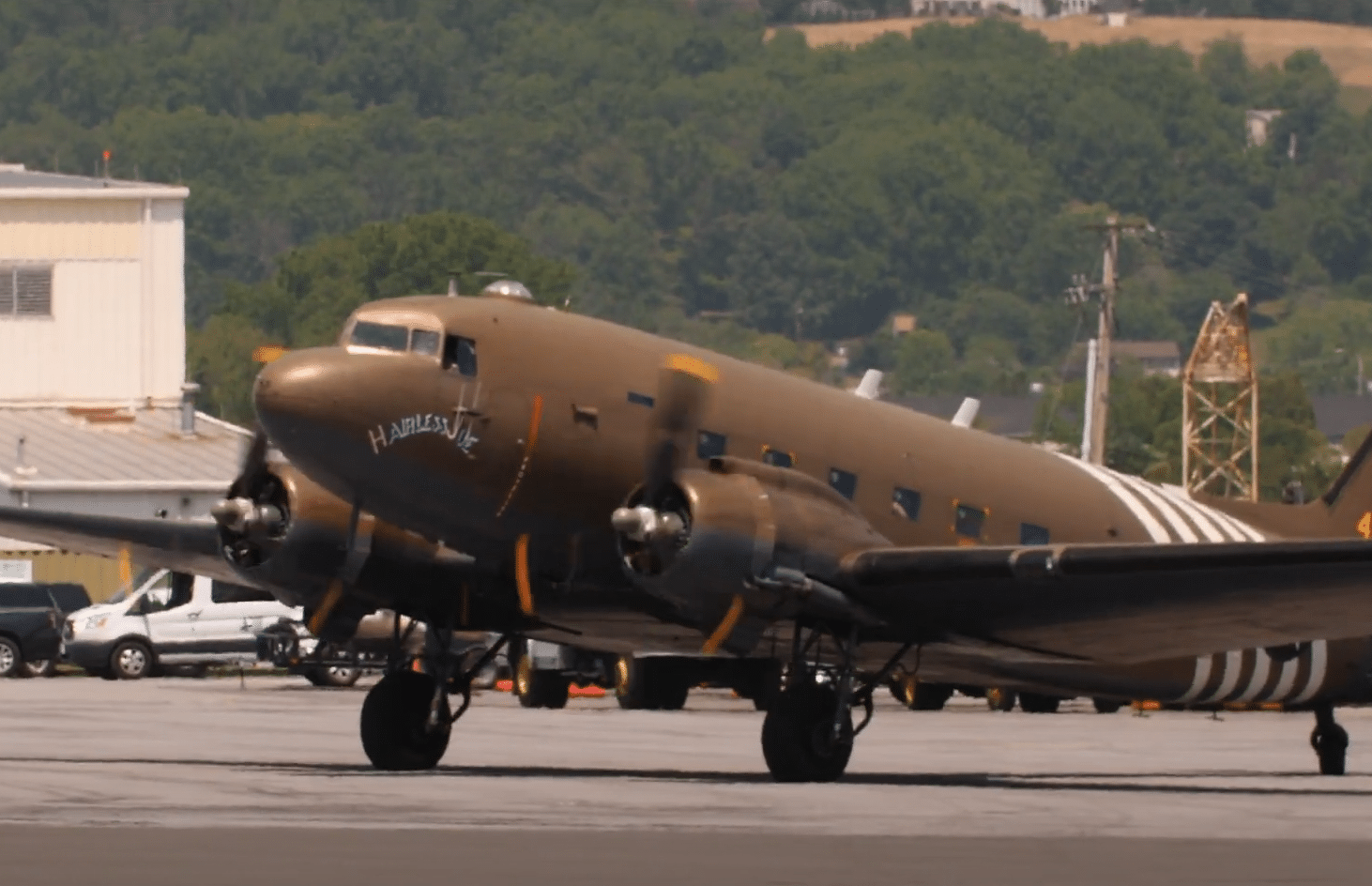Watch C-47 Placid Lassie World War II Airborne Demonstration

Daniel Gourdin / YouTube
The C-47 Skytrain played a crucial role in World War II as a military transport aircraft, carrying troops, supplies, and equipment across battlefronts. One of the most well-known C-47s was the Placid Lassie, an aircraft that took part in the D-Day invasion of Normandy on June 6, 1944. This aircraft was originally assigned to the 8th Air Force and was instrumental in airborne operations that helped the Allied forces push forward against German defenses.
Placid Lassie was one of the aircraft responsible for dropping paratroopers behind enemy lines before the main invasion force landed on the beaches of Normandy. These paratroopers were tasked with securing key positions, disrupting German movements, and ensuring a smoother advance for ground forces. The aircraft’s role in these operations made it a symbol of the bravery and strategic planning that shaped the war’s outcome.

A Commitment to Historical Preservation
Today, the C-47 Placid Lassie is preserved and operated by organizations committed to educating the public about World War II aviation. The aircraft has been restored to its wartime appearance, allowing audiences to witness its original design and functionality. It regularly participates in airshows, where it performs aerial demonstrations that recreate historic military operations.
One of the most impressive displays is the World War II Airborne Demonstration Team’s paradrop reenactment. This team is dedicated to preserving the history of airborne military operations and honoring the soldiers who carried out these missions. By using vintage aircraft like the C-47, the team gives spectators an opportunity to see firsthand how paratroopers were deployed during the war.
The WWII Airborne Demonstration Team
The WWII Airborne Demonstration Team consists of trained parachutists who use authentic World War II-era gear to recreate airborne operations. Their jumps replicate the techniques used by paratroopers during the D-Day landings and other airborne assaults of the war. These demonstrations highlight the dangers and challenges faced by the soldiers who parachuted into enemy territory under heavy fire.
Beyond public events, the team also provides training programs for those interested in learning historical parachuting methods. By offering a hands-on experience, they ensure that the skills and history of airborne forces are not forgotten. Their work keeps alive the memory of those who served, allowing audiences to gain a deeper understanding of the strategies and risks involved in airborne warfare.
Watch the video below:




















